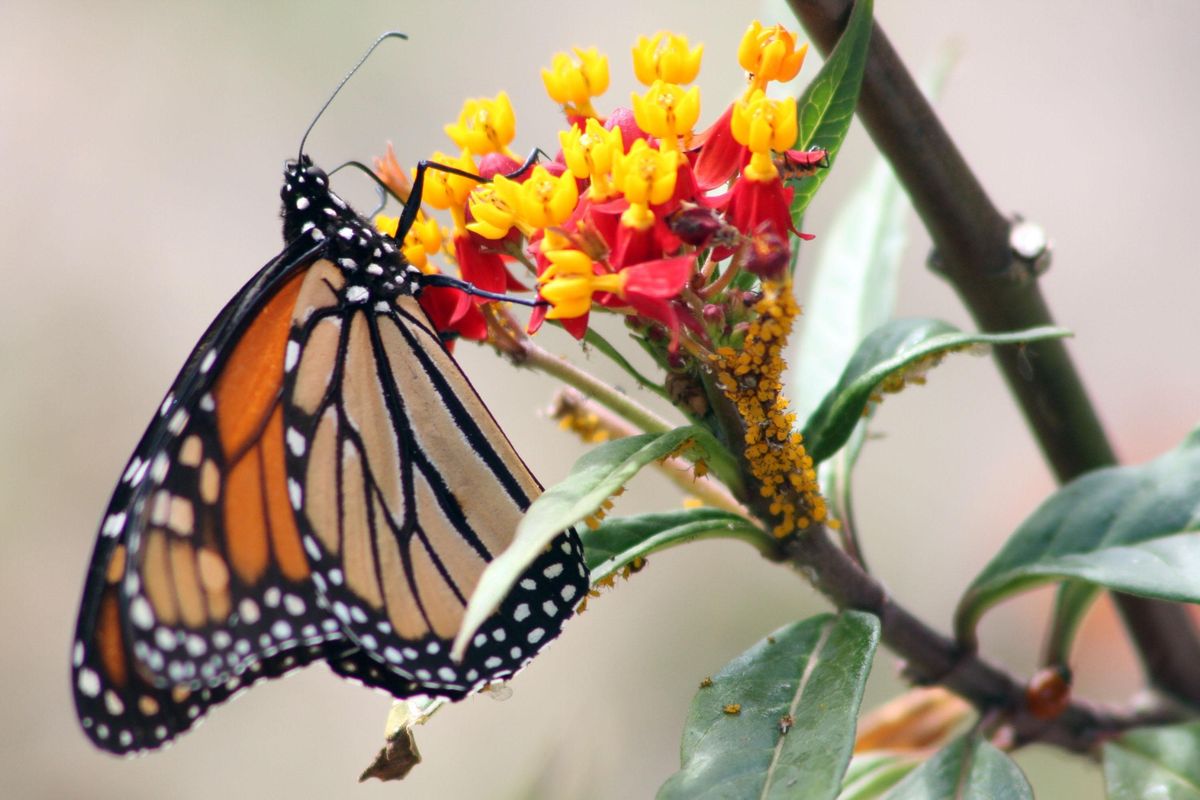Ask Dr. Universe: How do bugs have poison?

Dr. Universe: How do bugs have poison? – Wyatt, 11, New Zealand
Dear Wyatt,
There are all kinds of insects crawling and flying around our planet. And, you’re right, some of them – but not all of them – are poisonous. I learned all about poisonous insects from my friend David James. James is a researcher at Washington State University who is very curious about monarch butterflies.
Monarchs can actually eat plants that would be poisonous to most other animals. After a monarch caterpillar hatches, it will eat its own eggshell. Once it runs out of eggshell, it will start chomping on the poisonous milkweed plant. But it doesn’t cause the insect any harm.
In fact, monarchs need milkweed to help them grow and become a butterfly. Later, the butterfly will use the milkweed plant as the perfect spot to lay its eggs. That way when new caterpillars hatch and finish up their eggshell, they will have milkweed to eat.
When monarchs eat poisonous milkweed, the chemicals in the plant help form poison in their bodies. These chemicals are called toxins. When an animal inhales, touches or eats a toxic creature, they can experience the effects of poison. It can be deadly, but sometimes it just makes the animal sick.
If a bird eats a monarch, they might throw it up or spit out the butterfly. The predator probably won’t try to eat another monarch in the future. That poison can help the monarch species survive in the long run. Milkweed and monarchs have been helping each other survive for a long time. The plant provides food for the butterfly. Meanwhile, the butterflies help move around pollen to help new milkweed plants grow.
It turns out that insects can get their poison with help from plants. The cabbage white butterfly caterpillar, for example, eats a lot of cabbage. The cabbage white uses a combination of chemicals from the cabbage to produce a toxin in its own body. They can secrete the poison from their hairs or setae. If you look under a microscope, you would see little droplets that look like oil on their hairs, James explained.
Of course, humans don’t produce toxins from their hairs when they eat cabbage. Instead, they usually just get a lot of nutrients and fiber. Different toxins can impact different species in different ways. You might also be interested to learn that venom is different from poison. Venom is a kind of toxin injected through stinging or biting. If you get a bee sting or spider bite, you are experiencing the effects of their venom.
Whether an animal is venomous or poisonous, it will often use its bright colors or patterns to warn a predator. For example, monarch butterflies have orange and black patterns on their wings. The monarch caterpillars are yellow with white and black striped bands.
These brilliant colors can help send a message to predators like, “Don’t eat me, I’m poisonous!” It’s a helpful reminder for the predators and can help insect species survive.
Sincerely,
Dr. Universe